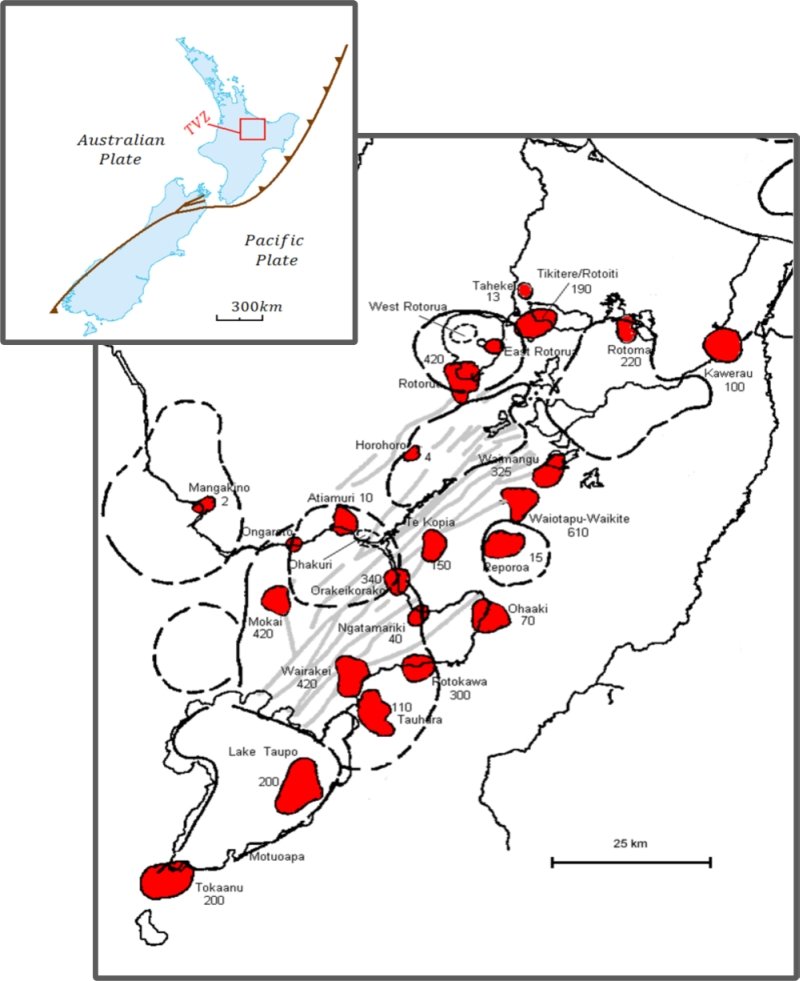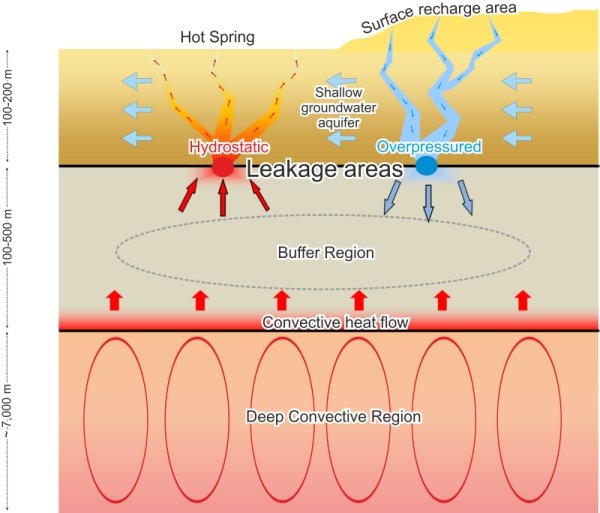Environmental effects on Hot and Saline Spring Behaviour in the Taupo Volcanic Zone (TVZ) and the Northeast German Basin (NEGB)
Hot and saline springs have implications for deep geothermal energy exploration and groundwater utilization and contamination and are of great scientific and economic interest. Springs are surface manifestations of coupled processes occurring at depth in the Earth. In this regard, the TVZ and the NEGB represent two end members in terms of the hydrology and thermodynamics encountered. In the TVZ hot springs often exhibit spectacular behaviour such as vigorous boiling, while in the NEGB springs occur in association with geological salt formations and exhibit a complex behaviour due to the buoyancy effects caused by salinity and temperature gradients. This project proposes to develop detailed numerical models of spring behaviour for both settings. The study will provide insights in the dynamics of springs resulting from flows through fracture systems connecting the deeper (hot and saline) aquifers and shallower (fresh and cold) surface waters. The goal is to understand their behaviour under environmental stresses such as those induced by geothermal developments in the TVZ and to explain the overall dynamics of saline springs with respect to the regional fluid migration in the NEGB.
Results
The collaboration has already led to major insights into aspects of hot/saline spring behaviour both in the Taupo Volcanic Zone (TVZ) in New Zealand as well as in the Northeast German Basin (NEGB) in northern Germany which have been missing from previous research. These new aspects comprise the cause of their natural variability and the nature and location at depth of the respective feeding zones. Despite the differences in the scales and background thermodynamics (cold and saline in the NEGB vs. hot and non-saline in the TVZ), the studies carried out in both settings show similarities in the overall fluid dynamics. Both cases concern the behaviour of fluids in a confined permeable aquifer with a leaky upper boundary. Concerning the TVZ in New Zealand, detailed modelling of the effective feeding/buffer zone between the deep source of geothermal fluids (~ 8 km) and the shallow groundwater aquifers (to ~100 m) has not been possible in previous field-scale models of geothermal areas. In this project we recognised that this buffer zone is the effective location of the feed points for hot springs, and that convective instabilities in this zone due to thermal effects are the likely explanation of the inherent transient behaviour of hot springs, see Figure 1.



